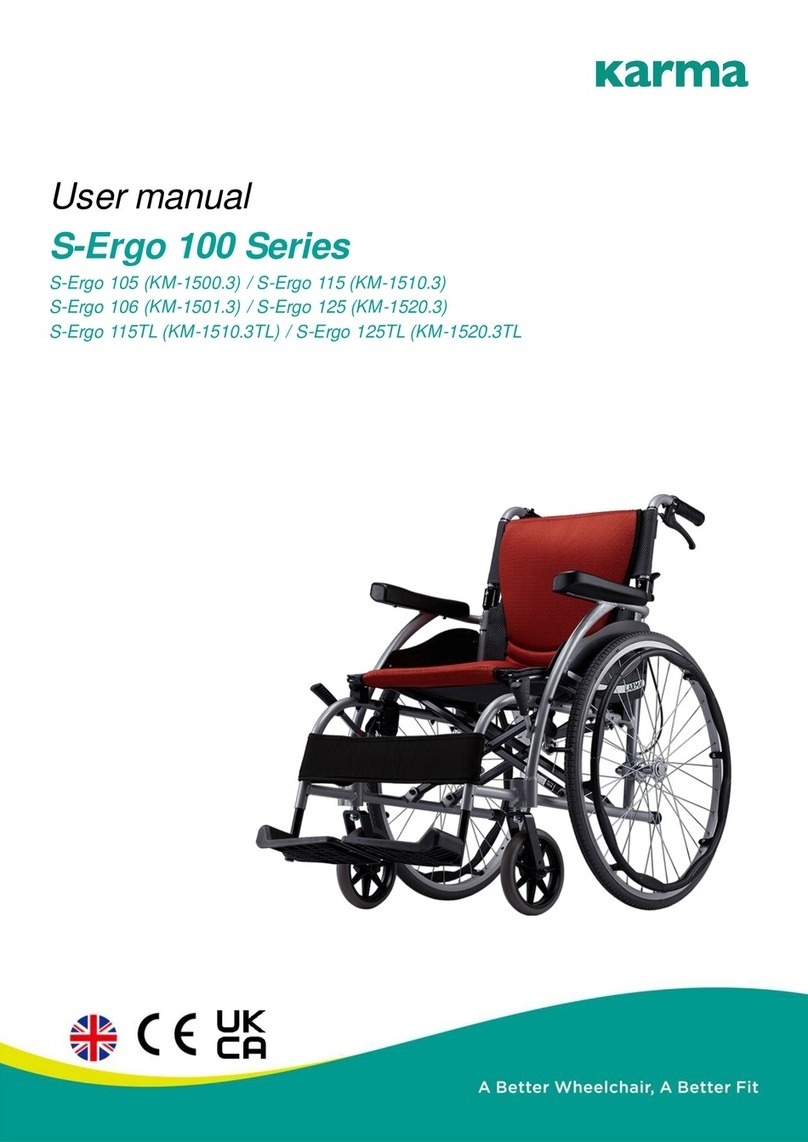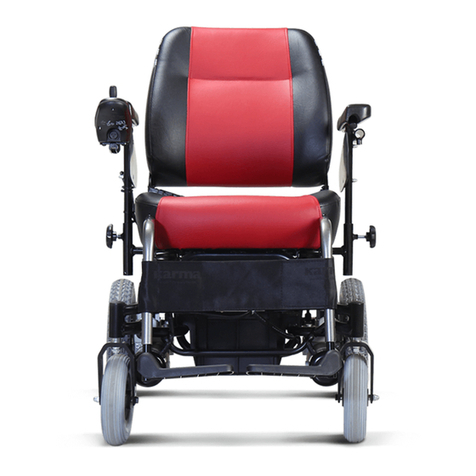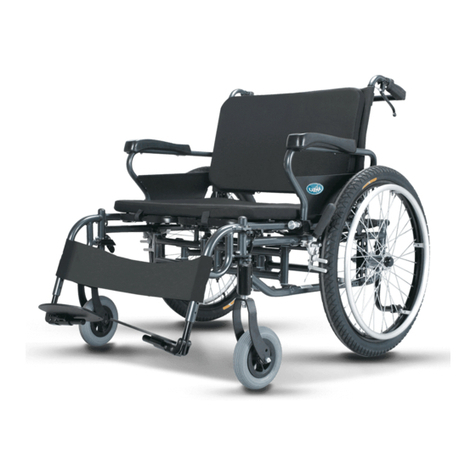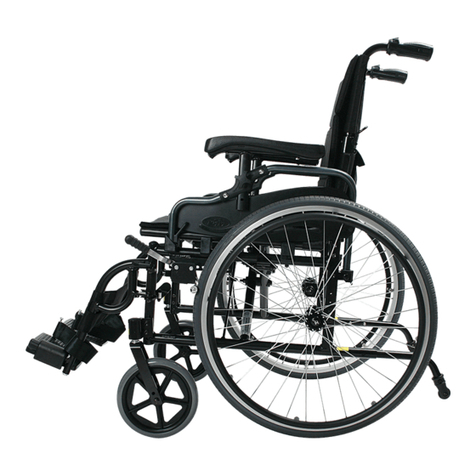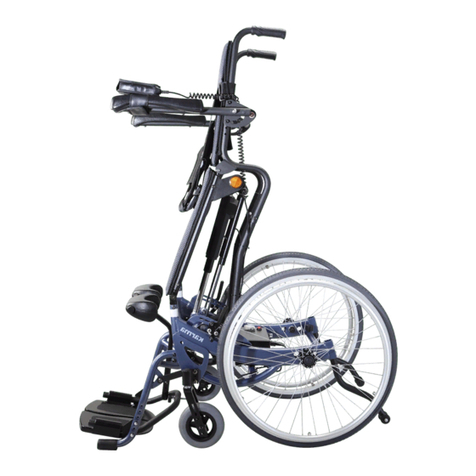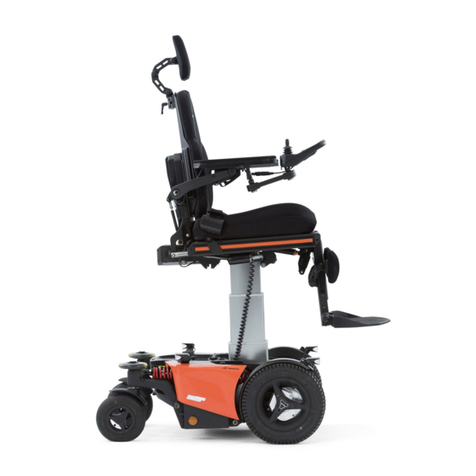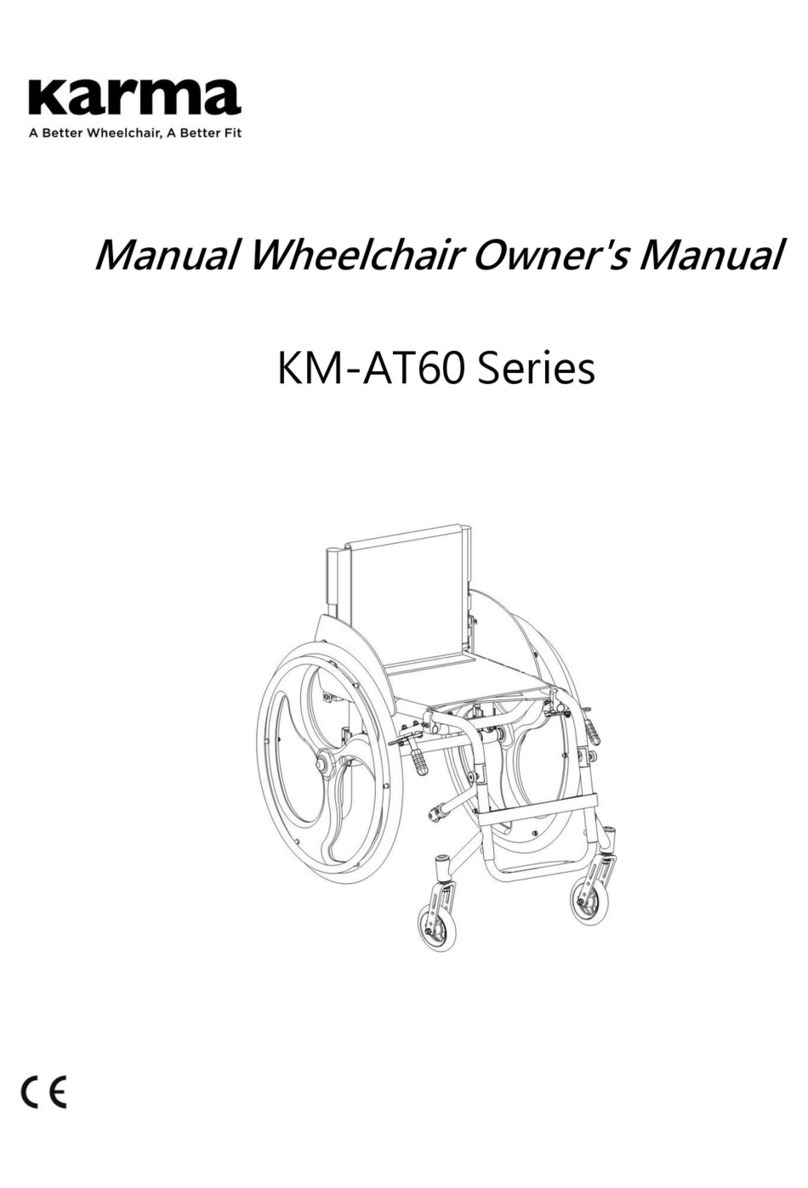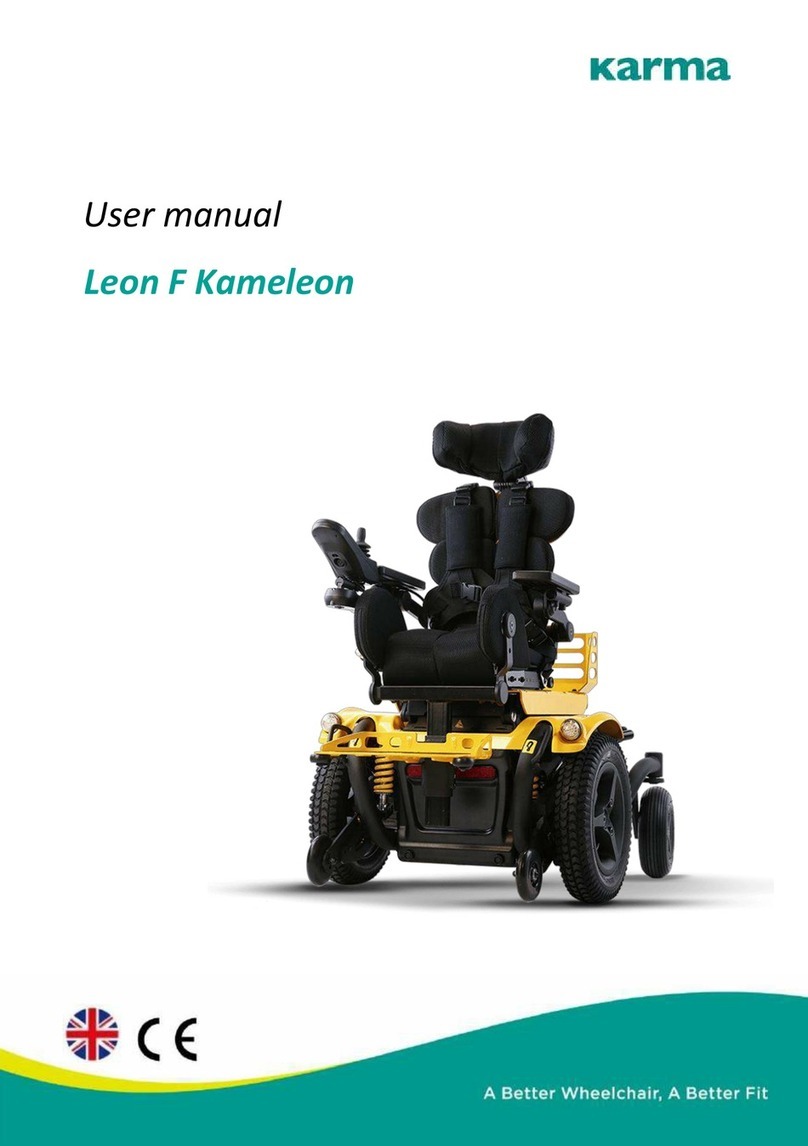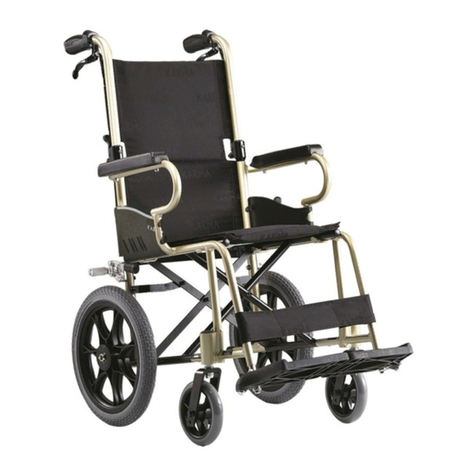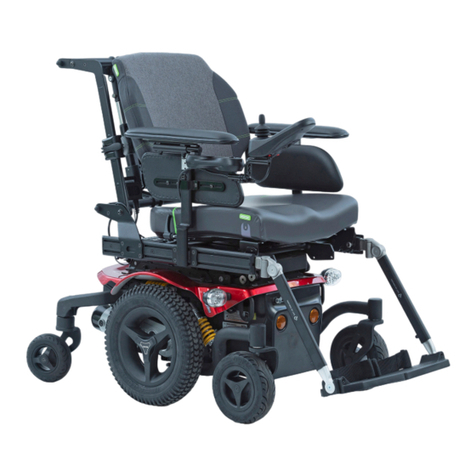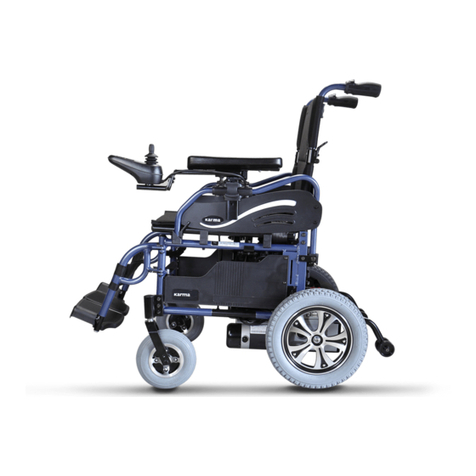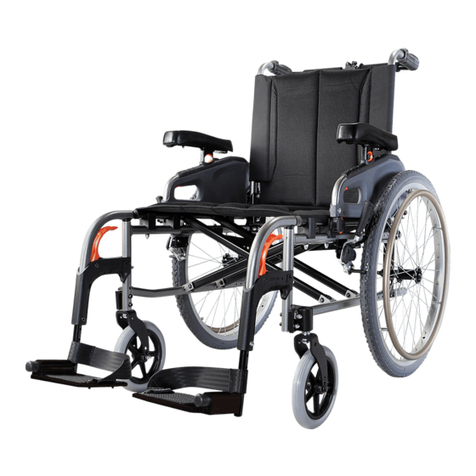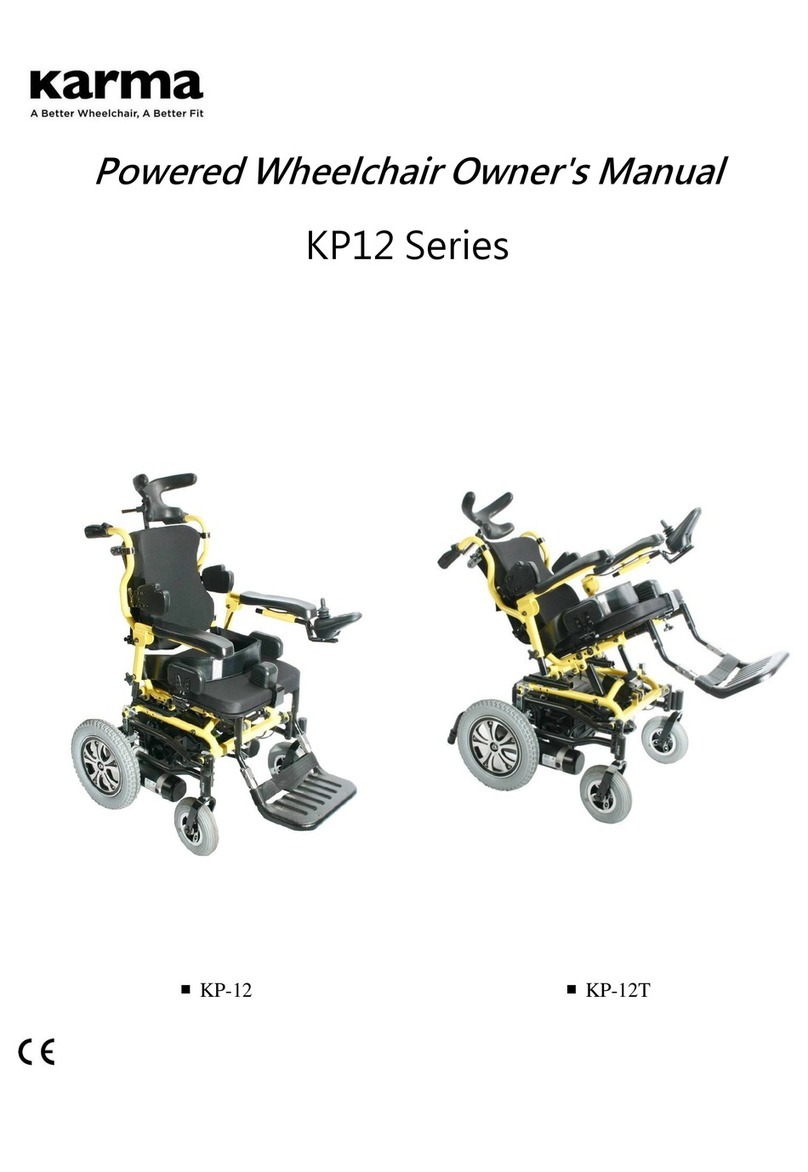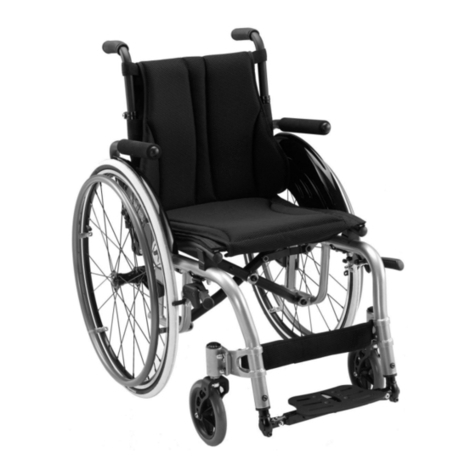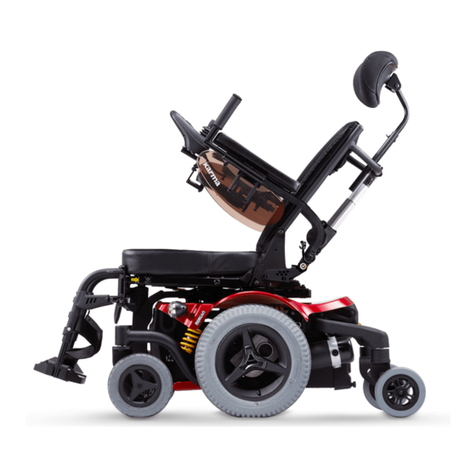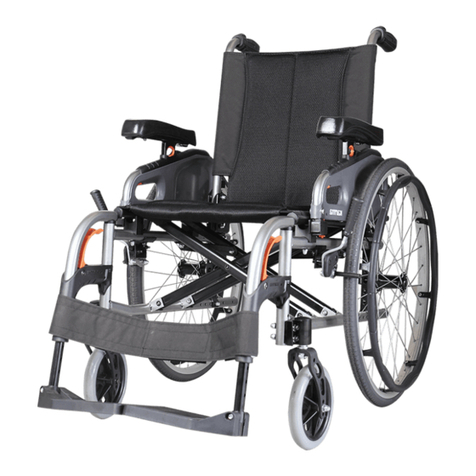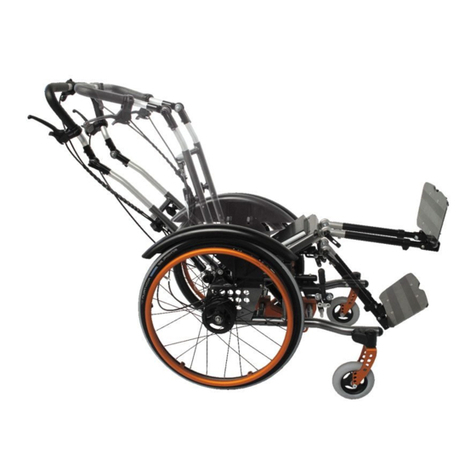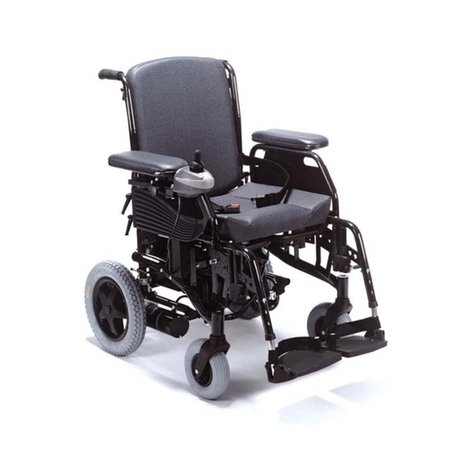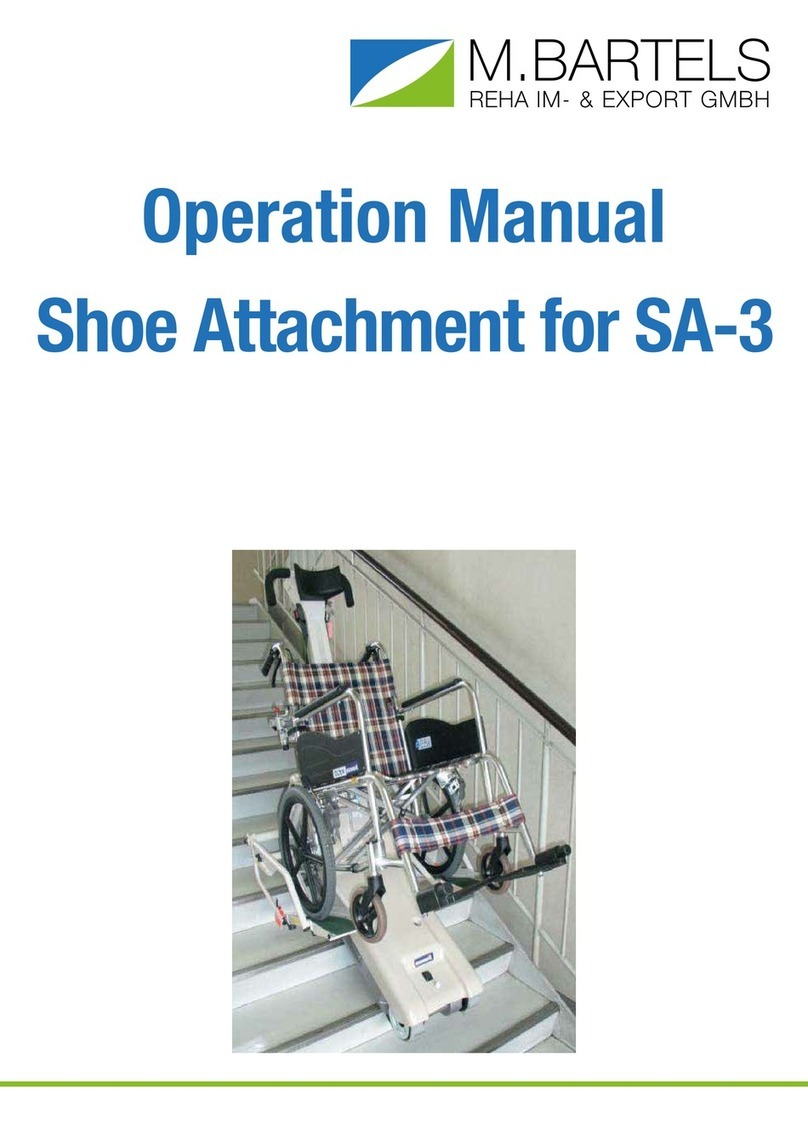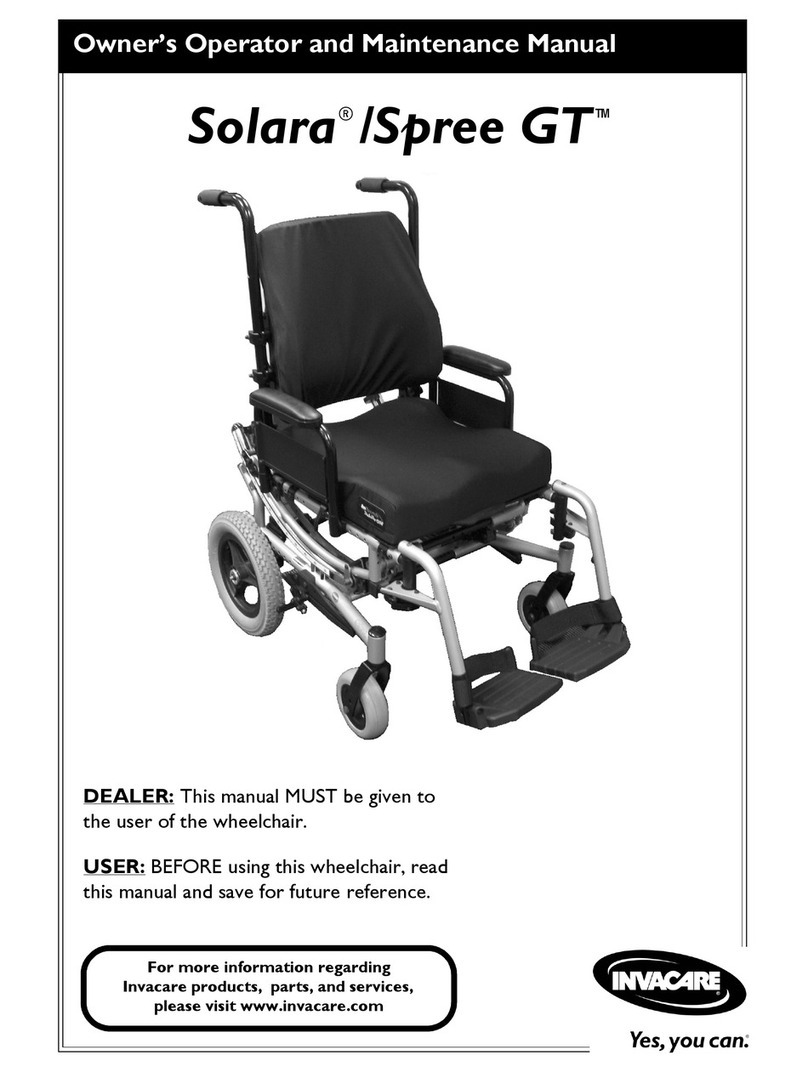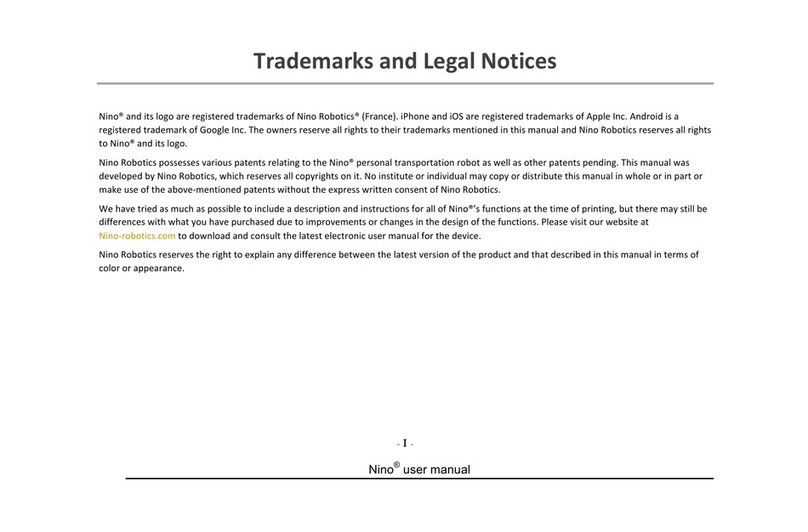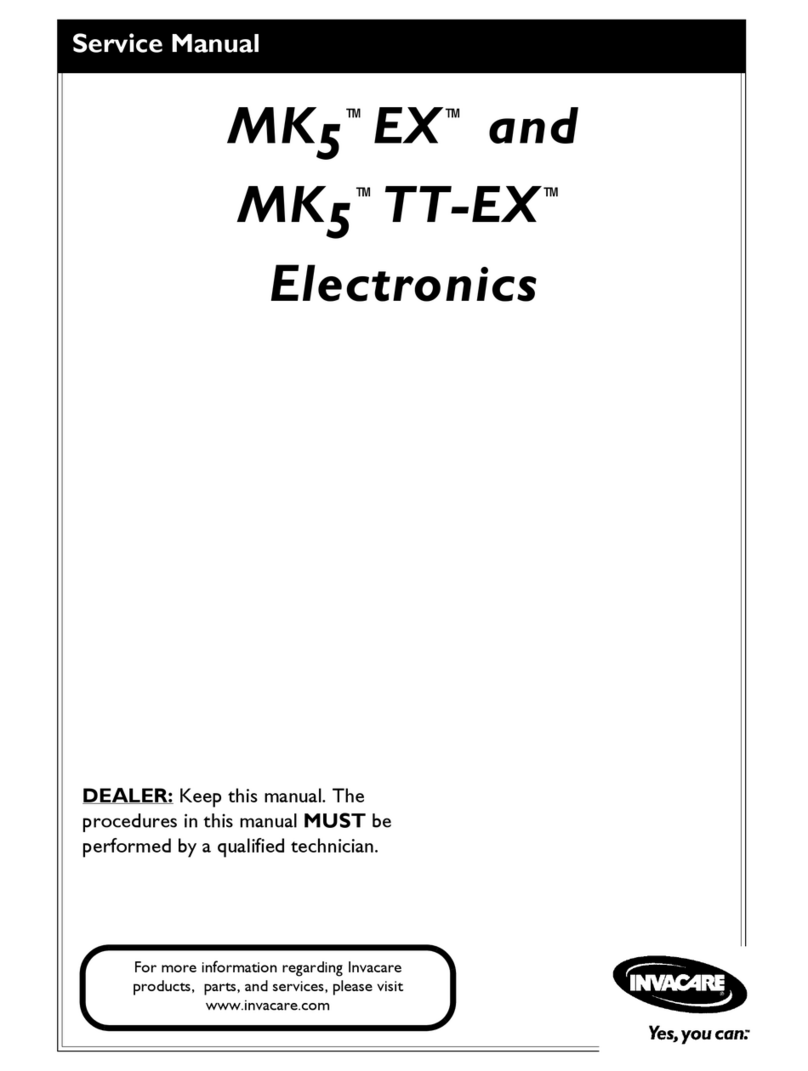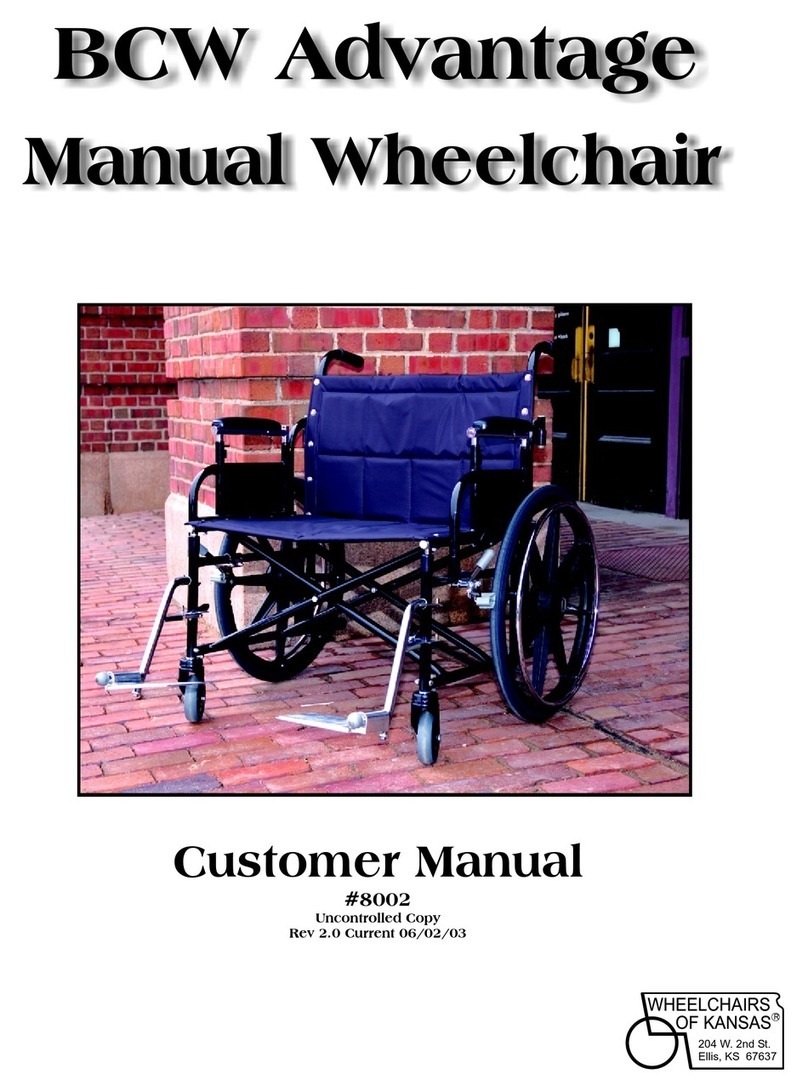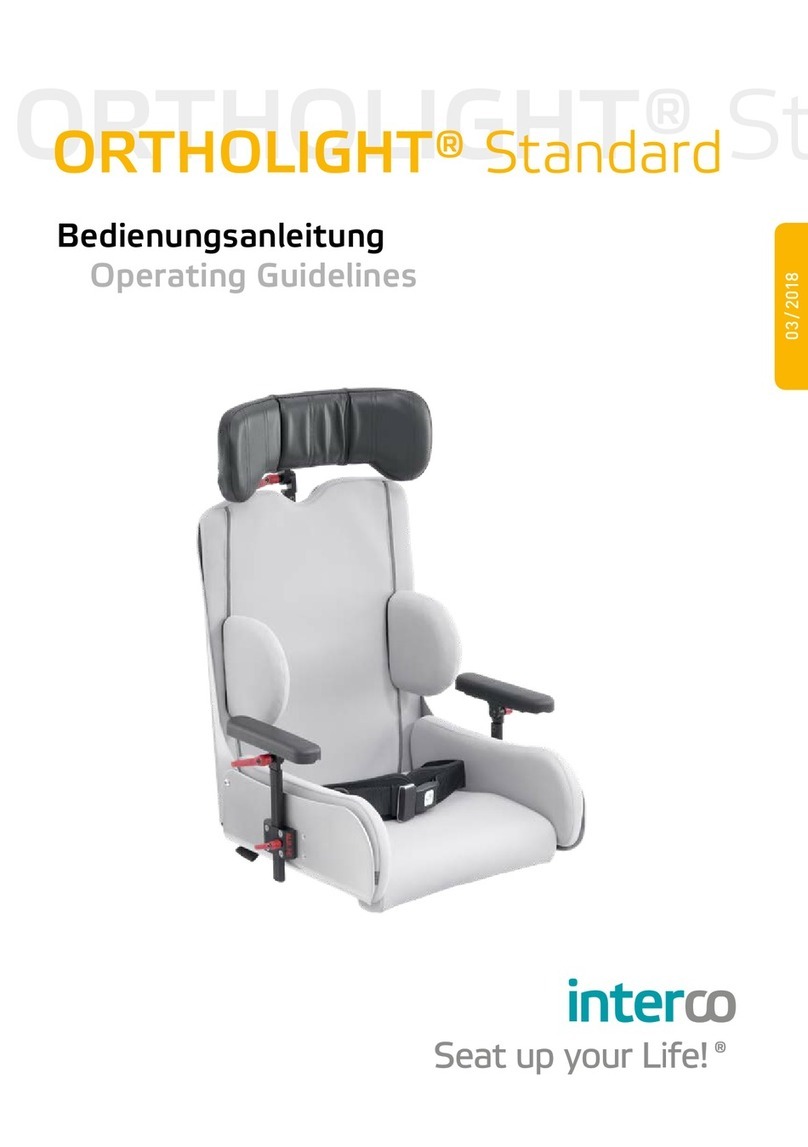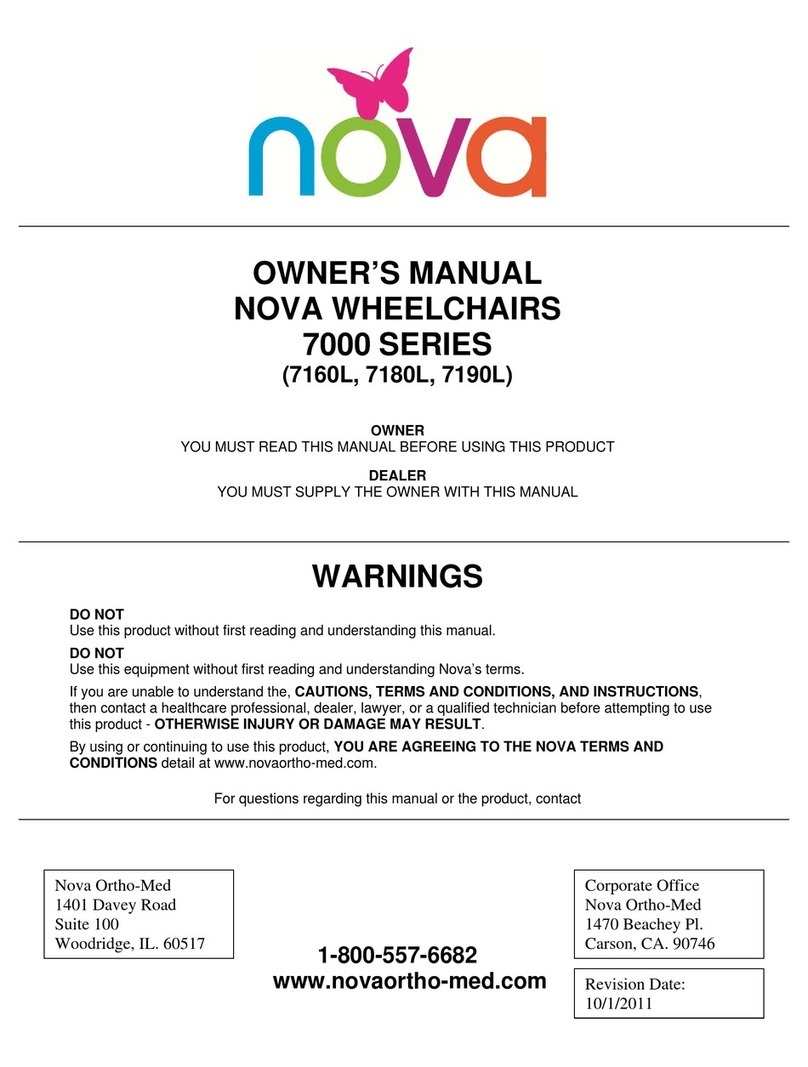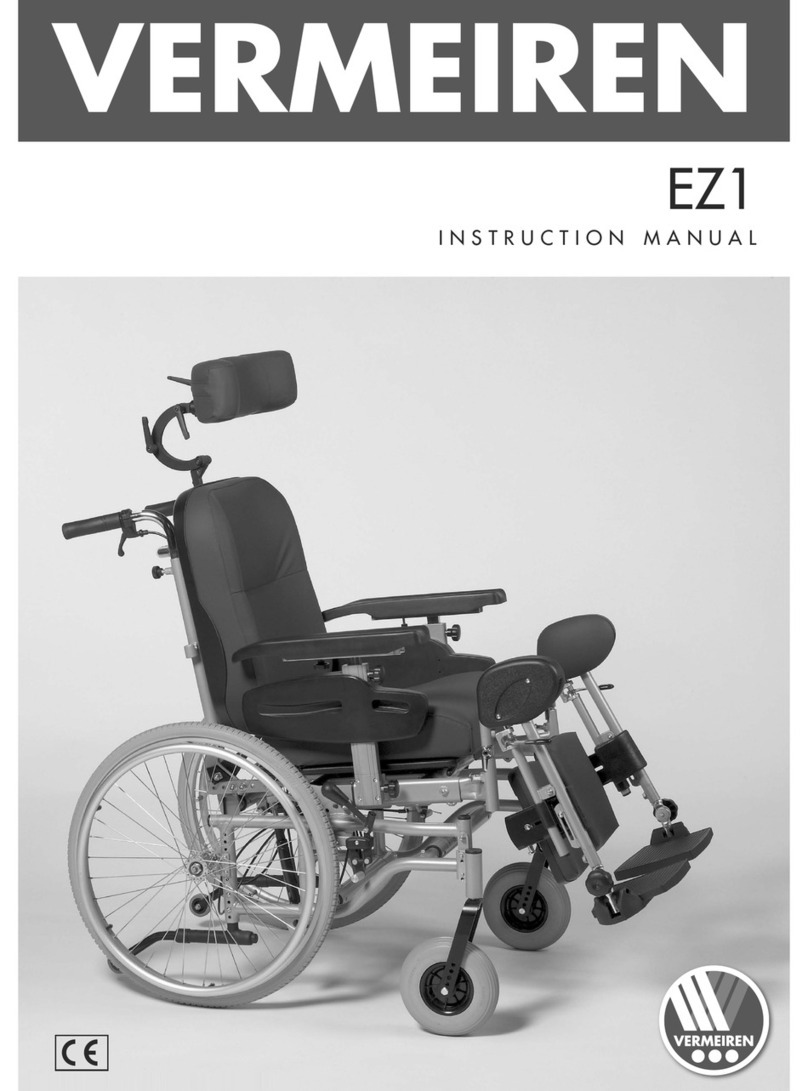
6
1.3.6 Steps
1.3.1 Attendant pushing and self-propelled pushing :
Do ensure that the brakes are always on when the chair is not being pushed.
Always make sure that both feet are safely on the foot plates and that clothing is safely tucked out
of the way and so cannot catch in the wheels.
Always use both hands on the push handles to control the chair.
Always look well ahead to anticipate hazards such as furniture, doors or pot- holes.
Always avoid steep or uneven surfaces because the chair may tip over.
Always avoid soft surfaces be cause the castors may get bogged down.
Always be careful not to go too fast or turn too quickly and try to achieve a smooth steady ride.
PLEASE keep in contact with the person in the chair. If you stop to look in shop windows or talk
to people remember to turn the chair so that the person in the chair does not have to turn.
NEVER put on user or attendant brakes too suddenly or too firmly as this may tip the user out of
the chair.
Never use the brakes to stop the chair. The brakes are for parking purposes only.
1.3.2 Tilting by attendant :
Step 1. Make sure both the user's feet are on the foot plates and will not slip off (Make sure the
hand grips are secure and not slip off.)
Step 2. Where necessary release both brakes.
Step 3. Grasp both push handles firmly.
Step 4. Put your stronger foot on the relevant tipping lever at the back of the chair by the wheel.
At the back of the chair.
Step 5. Tell the person in the chair that you are about to tilt the chair backwards.
Step 6. Pull back with both hands and push down and forwards with the foot. This will bring the
chair onto the back wheels.
CAUTION: When a chair is tilted to about 25 degrees it will balance on it’s rear wheels and be
easy to hold. If it is tilted further back it will be difficult to hold and the person in
the chair will feel unsafe.
Lowerwithastraightback,keepyour foot on the tipping lever and lower the chair
slowly forwards to the ground withoutabump.
1.3.3 Tilting by user :
CAUTION: THIS METHOD SHOULD ONLY BE ATTEMPTED BY PEOPLE
EXPERIENCED IN WHEELCHAIR USE, AND STRONG ARMS ARE ALSO
NECESSARY. IT IS ALWAYS BETTER TO HAVE THE HELP OF AN
ATTENDANT
Step 1. Make sure both the user's feet are on the foot plates and will not slip off.
Step 2. Release both brakes.
Step 3. Grasp both rear wheel hand-bars and give a firm, sudden forward push immediately
